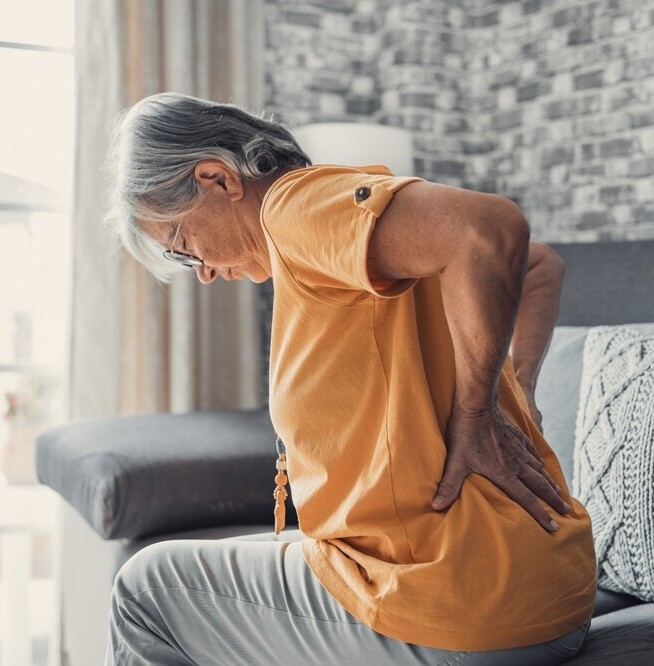Lower back pain has a way of showing up when you least expect it. Sometimes it’s a dull ache after a long day at work, and other times it’s a sharp, stubborn pain that seems to stick around no matter what.
I’ve definitely had my share of those rough mornings, and I know how annoying it can be trying to figure out the best way to get relief. Sorting through different options can get confusing, especially when every online article or neighbour and friend has their own remedy. So, what is the best treatment for lower back pain in the elderly.

Understanding Lower Back Pain: Causes and Types
Lower back pain in the elderly can pop up for all sorts of reasons. Sometimes it’s related to something simple like poor posture or lifting heavy stuff the wrong way. Other times, it can come from issues like muscle strains, herniated discs, or arthritis.
Figuring out the root cause helps point you to the right treatment and keeps you from spinning your wheels with stuff that doesn’t help.
The pain might come on suddenly (acute back pain), or it may become an everyday thing that sticks around for months (chronic back pain). Acute pain usually lasts less than six weeks, while chronic pain tends to hang around for more than three months. Each type has its own best approach. So your first step is spotting which one you’re dealing with and not just guessing your way through treatments.
First Steps: Home Remedies and Self-Care
If your pain is new and not super intense, there are plenty of things you can try at home before jumping into more advanced options. Here’s what has helped me and plenty of others get through those first few rough days:
- Stay Active: It’s tempting to stay in bed all day, but gentle movement actually helps. Short walks around your home or some light stretching keep your muscles from getting stiff.
- Heat and Ice: An ice pack calms down swelling, especially in the first two days after pain starts. After that, a heating pad or warm shower usually feels soothing and gets blood flowing.
- Pain Relief: Some people may need prescription-strength NSAIDs or opioid medications to help with pain. Over the counter medications like ibuprofen can take the edge off for a lot of people. Just be careful not to use them too long without asking your doctor.
For mild cases, these strategies often do the trick within a week or two. Adding a little gentle movement, like walking every day, actually builds confidence and supports recovery, even if you’re worried about soreness.
Physical Therapy: Building Strength and Flexibility
When self-care isn’t cutting it or your pain drags on, physical therapy is usually the top recommendation. A qualified physical therapist can teach you exercises to strengthen the muscles around your spine and stretch out anything that’s tightened up. I’ve personally found this approach really helpful, especially when you stick with the programme over several weeks.
- Core Strengthening: Weak abdominal and back muscles often set the stage for recurring pain. Simple moves like planks, bridges, or even gentle yoga can build support for your spine.
- Posture Training: Good body mechanics save your back from unnecessary strain. Physical therapists can coach you on better habits for sitting, standing, and lifting.
- Guided Stretches: Tight hamstrings and hip flexors can tug on your lower back, making things worse. Regular stretching works wonders, especially before and after activity.
Most people notice a difference within a few weeks of consistent therapy. According to the American Physical Therapy Association, exercise programs supported by research are one of the most reliable routes to reducing lower back pain for the long haul. Following the guidance of your therapist not only gives your back a boost but can also add some long-term protection against setbacks.
Medical Treatments: When Should You See a Doctor?
Some cases of lower back pain need more than home care or physical therapy. If your pain is severe, lasts more than a few weeks, or comes with symptoms like leg numbness or weakness, it’s smart to check in with a healthcare provider as soon as possible.
- Prescription Medication: Doctors may recommend muscle relaxants or prescription-strength painkillers if over the counter options aren’t working, but these are best for short-term relief only.
- Injections: For stubborn pain coming from inflamed nerves or discs, corticosteroid injections can provide relief for several weeks or months. These are usually used only when other options have failed.
- Imaging and Diagnosis: If your pain doesn’t have an obvious cause, your doctor might order an X-ray or MRI to rule out more serious problems like fractures, infections, or nerve compression.
It’s really important to keep an eye out for red flags, like pain that wakes you up at night, unexplained weight loss, or bathroom troubles. Any of these can signal something serious and need a doctor’s attention right away. Always talk to your doctor if you’re unsure.
Complementary and Alternative Approaches

A lot of people search for relief outside the typical medical playbook. Some of these methods dovetail nicely with regular treatments, though not everyone finds the same results. Here’s what I’ve tried and what current research says:
- Chiropractic Care: Spinal manipulation helps some people with acute pain, especially when it’s paired with exercise and education. Results can be mixed for chronic pain, but some people swear by it for relief.
- Acupuncture: Tiny needles in the skin might sound strange, but acupuncture relieves back pain for quite a few folks according to studies. It’s worth checking out if you like options that don’t involve pills or surgery.
- Massage Therapy: A professional back massage won’t fix every issue, but it does relax muscles and knock down tension, especially during flare-ups.
- Yoga and Mindfulness: Gentle yoga moves and relaxation techniques help many people manage chronic back pain, especially when stress is involved. Taking a few minutes for slow breathing or guided meditation can make a surprising difference when pain levels are up.
As always, make sure you’re working with certified professionals and keeping your doctor informed about what you’re doing.
Lifestyle Changes That Make a Difference
Preventing lower back pain or keeping it from becoming a long-term problem often comes down to daily habits. Here are a few things that have made a big impact for me and for people I’ve worked with:
- Staying Active: Regular exercise like swimming, biking, or brisk walking keeps your back in better shape compared to sitting all day.
- Proper Ergonomics: Tweaking your desk setup, picking out a supportive chair, and avoiding all-day slouching takes a lot of strain off your lower back. Even little adjustments, like putting a small pillow behind your lower back or raising your monitor to eye level, add up.
- Maintaining a Healthy Weight: Extra pounds, especially if you carry them in your belly, pile on additional stress that your back has to manage. Dropping even a few pounds can make moving around far less painful.
- Quitting Smoking: Smoking reduces blood flow to the spine, so it slows healing and can set you back. Cutting it out gives your body its best shot at bouncing back from injuries.
- Practicing Stretching Regularly: Adding a short stretching routine to your day loosens up key muscles like your hamstrings and hips, which takes strain off your back.
Common Challenges and How to Tackle Them
Getting relief from lower back pain isn’t always a straight line. Here are a few common hurdles I’ve seen (and faced myself), and what usually helps:
- Pain That Comes and Goes: Some days are way better than others. Staying consistent with gentle exercise, even on slow days, makes it less likely you’ll backslide.
- Frustration with Slow Progress: Recovery takes time and a lot of patience. Keeping a log of your small wins—even tiny improvements—can help you celebrate progress and stay motivated.
- Not Knowing What’s Safe: If you’re ever unsure about a stretch or activity, check with your physical therapist or doctor. Playing it safe is always better than making an injury worse.
Dealing with Flare-Ups
Even after weeks or months of improvement, flare-ups can strike. Sometimes it’s after extra yard work, other times it’s from a long car ride or slumping at your desk. The best response is to revisit your home remedies and stick with proven stretches. Keep a “go-to” list of your best relief moves handy so you’re ready for surprise setbacks.
Managing Expectations
Lower back pain can sometimes stick around in a mild way, even after you’re mostly better. The key is to keep moving, focus on comfort, and not stress about an occasional bad day. Remember, the path to feeling good again isn’t always a straight line, but steady effort does pay off.

Lower back pain comes with plenty of questions. Here’s what I get asked most often by patients during my role as a physiotherapist (click here to read my story)
Question: What is the most effective long-term treatment?
Answer: Exercise-based programs designed by a physical therapist are the best shot at staying pain-free in the long run. Building a stronger core really matters.
Question: Should I use heat or ice for lower back pain?
Answer: Ice is best for new pain or injuries (especially the first day or two). After that, most people prefer switching to heat when their back starts to feel tense or stiff.
Question: Is surgery ever necessary?
Answer: Almost nobody with lower back pain actually needs surgery. Most people get better with time, a little self-care, and physical therapy. Surgery is a last option, usually when nerve problems or serious damage are confirmed.
Key Takeaways
Treating lower back pain is different for everyone, but building a foundation with gentle self-care and then adding treatments as needed is a good formula. Physical therapy is crucial for building strength and keeping pain at bay.
Medical care makes sense for serious or persistent pain, and alternative therapies can give a boost for those who like to try several options. Staying active, focusing on better habits, and getting professional input really set the tone for good long-term results. If there’s one lesson I’ve learned, it’s that a well-rounded attitude beats any quick fix.
If you’re dealing with stubborn or severe lower back pain, always talk with a healthcare provider to create the best plan for your unique situation. There’s no need to “just live with it” when plenty of solutions can help you feel better and stay active.
